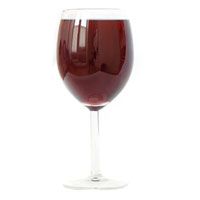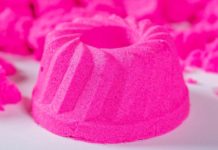 “Learn how to remove wine stains and other mild acid stains.
“Learn how to remove wine stains and other mild acid stains.
They say you can catch more flies with honey than vinegar. But what about cider and wine? Despite the pale color of these fluids, they’re all capable of leaving behind nasty laundry stains. Follow these tips to rid your household surfaces of these unsightly spots.
The first step in removing mild acid stains is to identify the stained material.
Below are the most common types of materials that can become acid-stained, with steps on how to remove mild acid from each:
- Non-washable fibers such as Acetate, Burlap, Cotton, Fiberglass, Linen, Rayon, Silk or Triacetate
- Washable fibers such as Acrylic Fabric, Modacrylic, Nylon, Olefin, Polyester or Spandex
- Hard surfaces such as Acrylic Plastic, Alabaster, Aluminum, Asphalt, Bamboo, Brass, Bronze, Cane, Ceramic Glass/Tile, Chromium, Copper, Cork, Enamel, Glass, Gold, Grout, Iron, Linoleum, Marble, Masonry Tile, Paint (flat or gloss), Pewter, Platinum, Plexiglas, Polyurethane, Stainless Steel, Tin, Vinyl Clothing, Vinyl Tile, Vinyl Wallcovering or Zinc
- Stone surfaces such as Bluestone, Brick, Concrete, Flagstone, Granite, Limestone, Sandstone, Slate or Terrazzo
- Other surfaces such as Carpet (synthetic or wool), Felt or Wool
- Leather or Suede
- Delicate surfaces such as Porcelain Dishes, Porcelain Fixtures or Silver
- Wood
Contents
- Non-washable Fibers
- Washable Fibers
- Hard Surfaces
- Stone Surfaces
- Other Fibers
- Leather or Suede
- Delicate Surfaces
- Wood
Non-washable Fibers
Follow these steps to remove mild acid stains from Acetate, Burlap, Cotton, Fiberglass, Linen, Rayon, Silk, Triacetate:
Note: Acetate will resist mild acids such as vinegar, but cotton and linen can be destroyed or weakened.
- Immediate treatment is imperative.
- Thoroughly flush (the method of applying stain remover to loosen staining material and residue from stain removers) with water or club soda, taking care not to spread the stain.
- Neutralize the acid to stop fabric damage and possibly restore any color change by holding the stain over an open bottle of ammonia (do not use for silk) and allowing the fumes to penetrate the fabric.
- Sponging (the method of using a dampened pad to apply light strokes, moving outward from the center of the stain) with a baking soda solution also neutralizes the acid.
- Flush the ammonia or baking soda from the fabric with clear water and allow to dry.
- Launder washable fabrics as soon as possible.
Washable Fibers
Follow these steps to remove mild acid stains from Acrylic Fabric, Modacrylic, Nylon, Olefin, Polyester, Spandex:
- Sponge the stain with water to which a few drops of ammonia have been added.
- Flush with cool water or club soda.
- If stain remains, repeat treatment with water and ammonia solution.
- Thoroughly flush the ammonia from the fabric with cool water and launder as soon as possible.
Hard Surfaces
Follow these steps to remove mild acid stains from Acrylic Plastic, Alabaster, Aluminum, Asphalt, Bamboo, Brass, Bronze, Cane, Ceramic Glass/Tile, Chromium, Copper, Cork, Enamel, Glass, Gold, Grout, Iron, Linoleum, Marble, Masonry Tile, Paint (flat or gloss), Pewter, Platinum, Plexiglas, Polyurethane, Stainless Steel, Tin, Vinyl Clothing, Vinyl Tile, Vinyl Wallcovering, Zinc:
- Wipe spill immediately with a cloth dipped in warm sudsy water to prevent the acid in the vinegar from damaging the surface.
- Rinse well with clear water and wipe dry.
Stone Surfaces
Follow these steps to remove mild acid stains from Bluestone, Brick, Concrete, Flagstone, Granite, Limestone, Sandstone, Slate, Terrazzo:
- Mix a solution of washing soda or detergent (not soap) and warm water.
- Scrub with a soft-bristled brush or cloth.
- Rinse thoroughly with water and dry.
Other Fibers
Follow these steps to remove mild acid stains from Carpet (synthetic or wool), Felt, Wool:
- Blot the excess liquid immediately with an absorbent pad.
- Sponge the stain with club soda or a cloth dipped in warm sudsy water.
- If possible, prevent soaking the carpet.
- If a stain remains, add a few drops of ammonia to clear water.
- Sponge into the stain and blot, using great care with wool, as it is sensitive to ammonia.
- Rinse with clear water.
- Place an absorbent pad over the stain and blot up as much liquid as possible.
- Allow to thoroughly air dry.
Leather or Suede
Follow these steps to remove mild acid stains from leather or suede:
- Mix a solution of mild soap in lukewarm water.
- Swish to create a great volume of suds.
- Apply only the foam with a sponge.
- Wipe dry with a clean cloth.
- On leather only, follow with cleaners such as Tannery Vintage Leather Cleaner & Conditioner or Fiebing’s Saddle Soap to condition the leather.
Delicate Surfaces
Follow these steps to remove mild acid stains from Porcelain Dishes, Porcelain Fixtures, Silver:
- Wash in hot soapy water.
- Rinse in hot water and wipe dry with a soft cloth.
- Never let acids like vinegar remain on silver as the acid can pit and corrode the metal.
Wood
Follow these steps to remove mild acid stains from wood:
- Mix dishwashing detergent in hot water and swish to make a great volume of suds.
- Dip a cloth in only the foam and wipe the stain with it.
- Rinse with a cloth dampened with clear water.
- Wipe dry and apply a polish or wax.







































